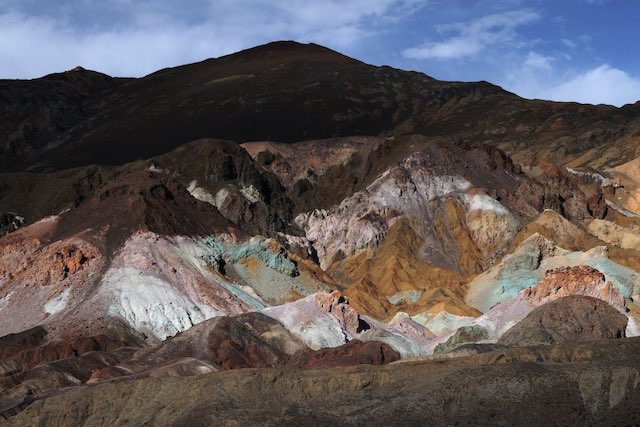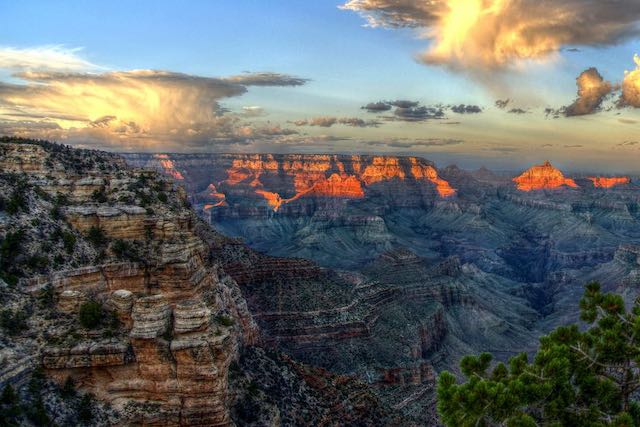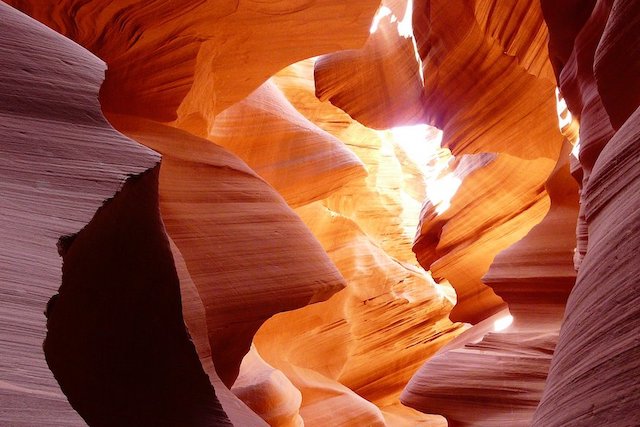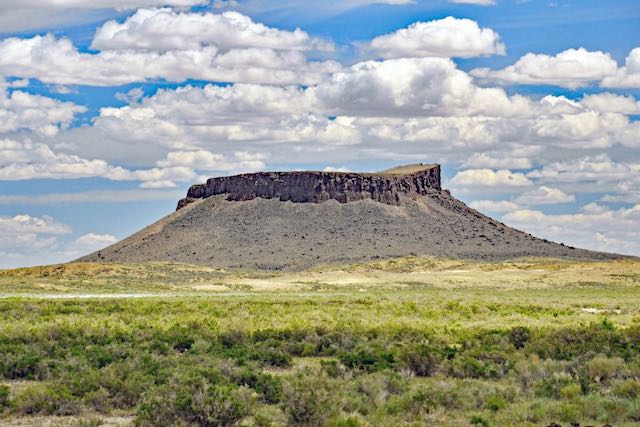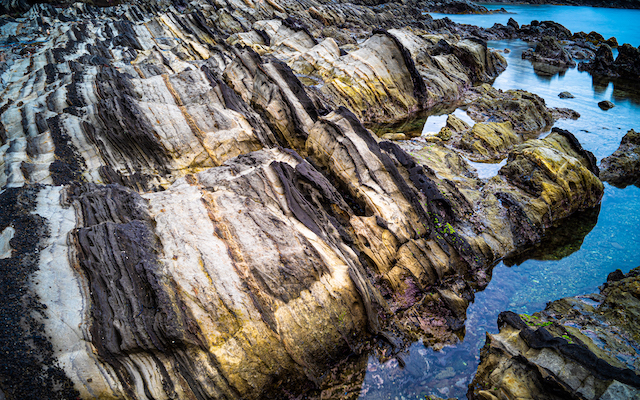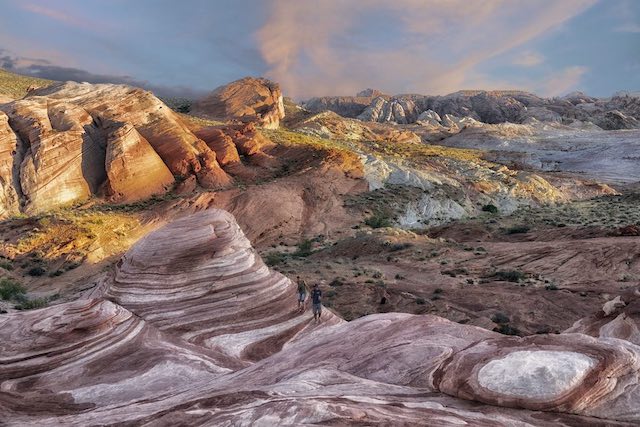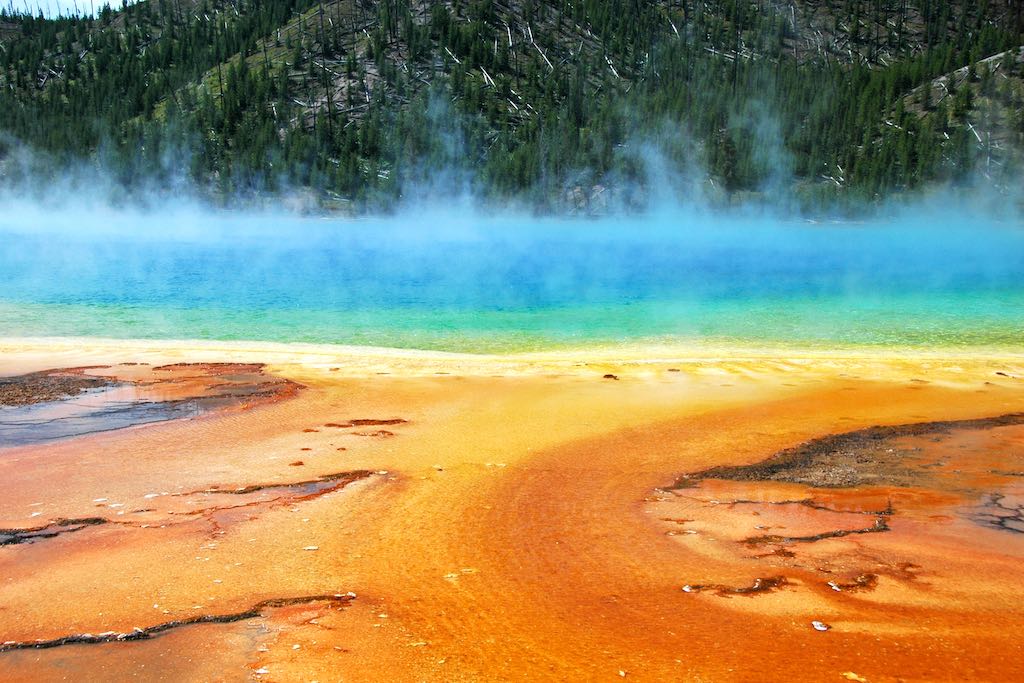
A rainbow-colored hydrothermal spring with a diameter of 110 meters
Blue, green, yellow, orange, red. This hydrothermal spring in a rainbow of colors is the Grand Prismatic Spring, located in Yellowstone National Park in northwestern Wyoming, USA.
It was named after the prism that divides sunlight into the seven colors of the rainbow. It is about 110 meters in diameter and about 50 meters deep. It is the third largest hydrothermal spring in the world, after Flying Pan Lake in New Zealand and Boiling Lake in Dominica (not the Dominican Republic).
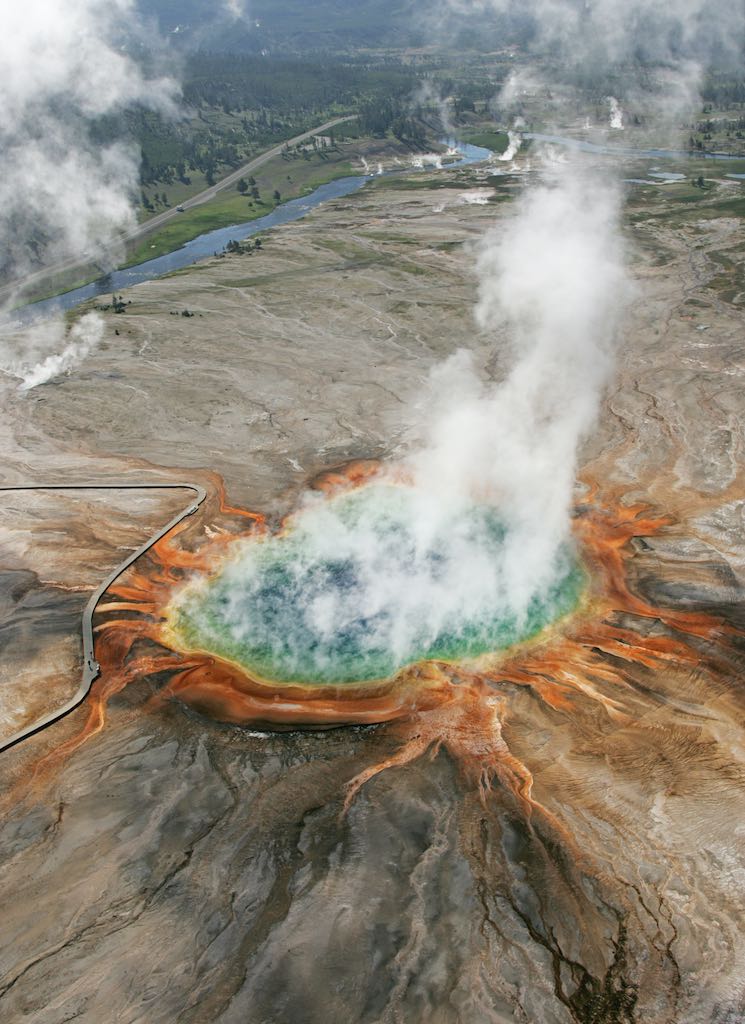
Located in the largest volcanic area in North America, Yellowstone National Park is home to a variety of hydrothermal activities (groundwater activity heated by magma) in addition to hydrothermal springs.
Geysers, which regularly spew out columns of water with great force, and mud pots, which have less water but more mud and sand. Fumaroles, where there is even less water and only steam, are also a type of hydrothermal activity. All together, there are more than 10,000 hydrothermal activities in Yellowstone National Park.
The secret of the rainbow color is silica particles and bacteria
Now, the characteristic rainbow colors of the Grand Prismatic Spring are interesting. These vivid colors are the result of silica particles and bacteria in the water. Let’s take a look at each color in turn.
The reason why the innermost part looks dark blue is because the large amount of silica particles contained in the hydrothermal water (groundwater heated by magma) scatters the blue light. Silica is silicon dioxide, and in high-temperature hydrothermal water, a large amount of silica is dissolved from the surrounding rocks. And some of it is present as tiny little grains of silica (called colloids), and when the light entering the water hits these tumbles, it scatters.
But of the components of light (the seven colors of the rainbow), only blue is scattered. The other colors, such as red, yellow, and green, have a longer wavelength than blue, so they don’t hit the silica particles, which are very small, and pass right through them. This is why the center of the spring appears blue.
Towards the end of the hydrothermal spring, you can see yellow, orange, red, and brown, which are the colors of the pigments of bacteria. This is a type of bacteria called cyanobacteria, which has carotenoids (yellow, orange, red) and chlorophyll (green) as pigments.
The reason for the beautiful gradation from the inside to the outside of the hydrothermal spring is that there are different types of cyanobacteria living in different temperatures. Different types of cyanobacteria have different amounts and combinations of pigments, which results in the gradation of the water.
Lastly, green. The green color you see between the blue center and the yellow, orange, red, and brown periphery is mainly due to light mixing. The yellow color produced by the bacteria is reflected and mixed with the blue color in the center, making it look green. The result is a magnificent rainbow of colors.
The color of the bacteria in the Grand Prismatic Spring also changes with the seasons. In summer, reds and oranges become more vivid, and in winter, the color is generally dark green.
Microorganisms that live in boiling water
The bacteria that live in Grand Prismatic Spring are specialized heat-loving bacteria. For example, cyanobacteria that produce a yellow color (Synechococcus) can survive up to about 72 degrees Celsius, those that produce an orange-red color (Formidium) can survive up to about 50 degrees Celsius, and those that produce a brown color (Calothrix) can survive up to about 45 degrees Celsius.
The change in color from the center to the periphery corresponds to the viable temperature range of the bacteria that produce each color, right? In other words, as the temperature of the hydrothermal water decreases toward the periphery, the bacteria species change to those that prefer lower temperatures.
These cyanobacteria are impressive enough, but they are not the only extreme environment microorganisms (thermophiles) in Grand Prismatic Spring. In fact, microorganisms have been confirmed to exist in the blue and green areas in the center of the hydrothermal spring, which are much hotter.
They are not members of the cyanobacteria family, but different bacteria called Chloroflexus and Deinococcus thermus. They can survive up to about 85 and 79 degrees Celsius respectively. At such high temperatures, it’s already boiling water.
The rainbow-colored hydrothermal springs are also a treasure trove of microorganisms that live in extreme environments.
References
Katsuaki Watanabe (2020) Utsukushisugiru chigaku Jiten (Handbook of the Most Beautiful Geological Wonders), Tokyo: Shuwa System [published in Japanese].
National Park Service – Yellowstone | Hydrothermal Features
National Park Service – Yellowstone | Hot Springs
Location
The caldera topography of Yellowstone Volcano can be clearly seen in satellite images. Inside the caldera, there is Yellowstone Lake and Grand Prismatic Spring.
Translated with www.DeepL.com/Translator (free version)

